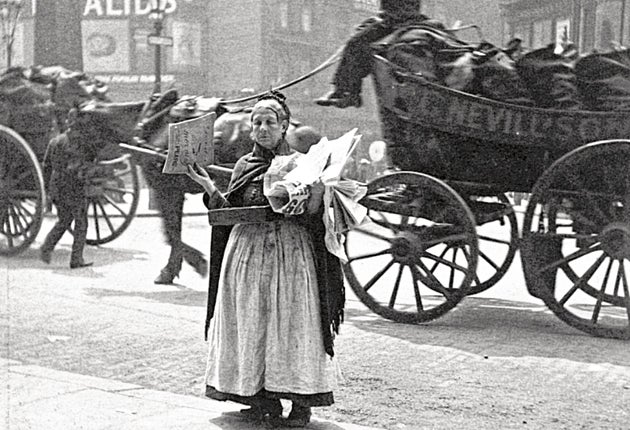London Street Photography, Museum of London

Your support helps us to tell the story
From reproductive rights to climate change to Big Tech, The Independent is on the ground when the story is developing. Whether it's investigating the financials of Elon Musk's pro-Trump PAC or producing our latest documentary, 'The A Word', which shines a light on the American women fighting for reproductive rights, we know how important it is to parse out the facts from the messaging.
At such a critical moment in US history, we need reporters on the ground. Your donation allows us to keep sending journalists to speak to both sides of the story.
The Independent is trusted by Americans across the entire political spectrum. And unlike many other quality news outlets, we choose not to lock Americans out of our reporting and analysis with paywalls. We believe quality journalism should be available to everyone, paid for by those who can afford it.
Your support makes all the difference.There is a photograph by Horace Nicholls at the Museum of London's excellent London Street Photography that neatly encapsulates the elusive magic of street photography. It was taken at the Epsom Derby in 1910 and features a well-dressed lady in her thirties, who sits slumped at a table resting her head in her hands with a cigarette in mouth, lost in thought. But what thought? Street photography can capture a fleeting moment in a stranger's life for eternity, but it will never tell you what they were thinking. That's for the viewer to ponder.
The writer B S Johnson tried to combat this with his book Street Children in 1964, writing captions for Julia Trevelyan Oman's evocative images that were an attempt to reproduce the thoughts he imagined were going through the children's heads. Johnson would have a field day here, where children feature heavily in an exhibition drawn from the museum's huge collection. A picture by pioneer Paul Martin from 1893 shows barefoot urchins perched on a street corner in unimaginable poverty. An anonymous picture from 1900 shows four street children, fully dressed now, playing happily in a water trough in Barnet. Fast forward to 1959 – via Cyril Arapoff's wonderful images of children in Poplar in the 1930s – and Roger Mayne has a lovely picture of children playing cricket in Notting Hill. Parked cars can be glimpsed, poised to end street games forever. Skip to 1967 and the children photographed by Henry Grant are reduced to using the cars themselves as playthings.
As that sequence suggests, you can trace the social history of London through these images just as much as the progress of street photography itself. Early images were largely architectural, with humans appearing almost by accident. By the 1890s, technology had developed so that amateurs like Martin could take their cameras on to the streets and snatch shots of the world at work and play. Many were anthropological, an attempt by the middle-classes to catalogue the mysterious lives of the poor. Later, an influx of continental photographers fleeing the Nazis brought a different eye to the lens, still journalistic but with a more personal and knowingly artistic style that was developed by natives like Grant and Mayne. More recently, the pursuit of the artistic has almost usurped the journalistic. Many of the contemporary images are trying too hard to be clever, although perhaps time will lend them greater authority.
The most memorable images then, come from the middle of the last century, when journalism and art were in perfect balance. The German Lutz Dille produced a series of witty portraits of Londoners in 1961, while Colin O'Brien's photos of road accidents in 1959 anticipate both Warhol and Ballard. Others are quite the opposite: Wolf Suschitzky's photos of the West End in the 1930s are vivid evocations of that era's glamour and grime, while Terry Spencer's stunning picture of four mean-looking skinheads strutting past hippies in Piccadilly Circus puts 1969 in a nutshell. The exhibition's accompanying book is endlessly browsable, full of subjects whose lives we can stare at but about whose thoughts we can only speculate.
To 4 September (020 7001 9844)
Join our commenting forum
Join thought-provoking conversations, follow other Independent readers and see their replies
Comments